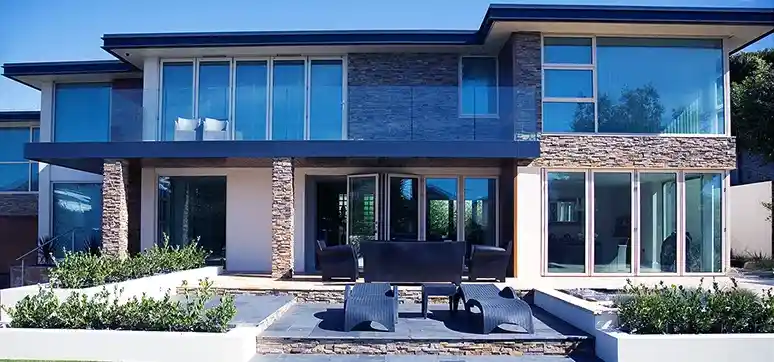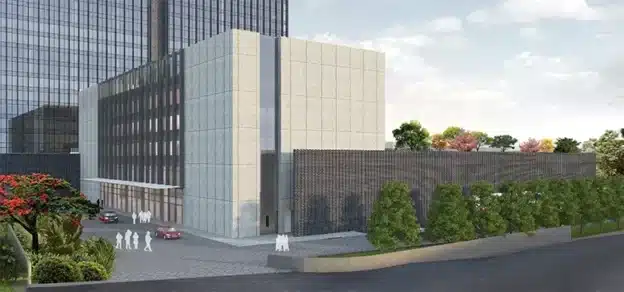The exterior elevation remains the first point of expression of style as it adds grandeur and elegance to any structure. One of the most in-demand options for external facades is stones. The beauty of stone cladding is that it brings a personalized and distinct aesthetic appeal to any space. As stone is a versatile material with myriad possibilities it can be used on both interior and exterior walls to elevate the look of the area.
In India, hard stone rocks like granite, sandstone, basalt, and slate are the most common choices for exterior wall cladding, while softer materials like marble are more suitable for interiors. There are several factors to be considered before selecting the best type of stone, including appearance, intended use, size of the space, and type of composites that will provide strength and durability.
Types of Stone Cladding Materials
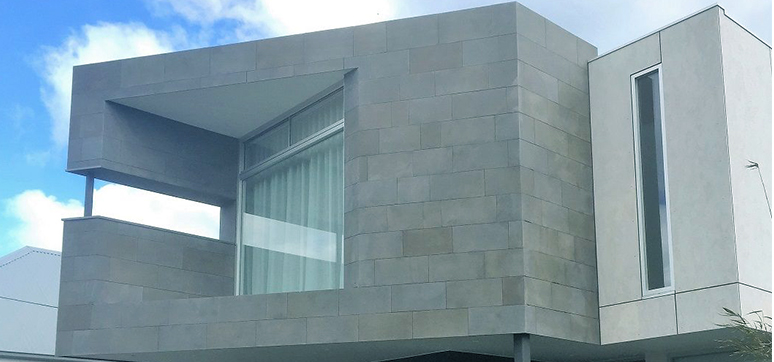
Basalt Cladding
The dark grey-blue volcanic stone is the most suitable option for interior and exterior stone wall cladding. The notable qualities of basalt are its durability, resilience, and high insulating capability.
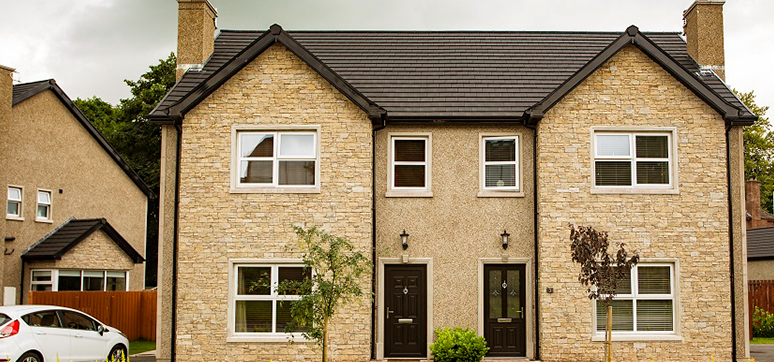
Granite Cladding
Granite is one of the most preferred choice building materials for exterior wall cladding. The defining feature of this stone is the durability and permanence of its colour and texture.

Jerusalem Stone Cladding
This historic stone is made from a pale form of limestone and dolomite. Jerusalem stone is known for its density and its ability to weather harsh conditions effectively.
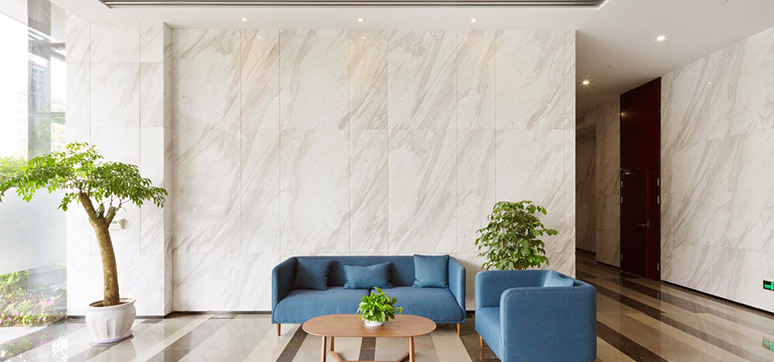
Marble Cladding
Marble signifies elegance and grandeur. This natural stone is difficult to work with but gives impressive results.
Slate Cladding
Slate is a metamorphic rock that is considered to be an optimal building material for both interior and exterior wall cladding. It has high durability, excellent water resistance, elegant and sophisticated appearance that makes it a trendy choice for stone cladding.
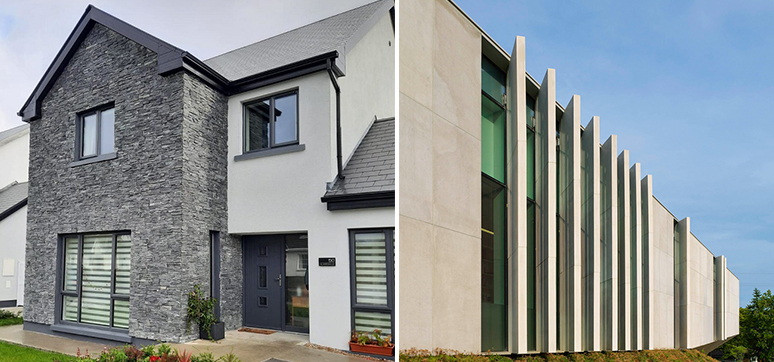
Limestone Cladding
This unique and versatile stone is a perfect option for building faces because it can be carved and shaped relatively easily.
The Pros And Cons Of Stone Wall Cladding
- Sustainability- Stone being a natural product can be reused and has the potential to serve many different purposes. For instance, an old stone building can be disassembled, natural stone can be extracted to be later used in a different structure.
- Easy Installation- Stones are usually cut into slabs. Stones like granite, and marble are available in large slabs allowing easier installation.
- Weather Resistance- Natural stones are inherently resistant to weather, thanks to their durability, that it stands the passage of time and does not deteriorate, which overall saves you a lot of money on maintenance costs.
- Finishes- Stone offers various finish options to suit applications such as polished finish, honed finish, and sandblasted finish. Therefore, it can be used in a wide range of projects to elevate their appearance.
- Insulation- Stones provide a high level of insulation, which can therefore reduce the heat loss or heat gain of a building envelope.
- Timeless beauty- Stones have a natural look that conveys a timeless impression like marble could be polished many times and still look new.
- Heavy- Due to their natural characteristics and uniform properties stones are heavier than other wall cladding materials like tiles, or timber.
- High price- Stones are a more expensive material than some other cladding products
Stone Cladding Installation Methods
Stone cladding is a wonderful choice for exterior wall cladding and can be installed mainly by two methods, namely the wet installation method and the dry installation method.
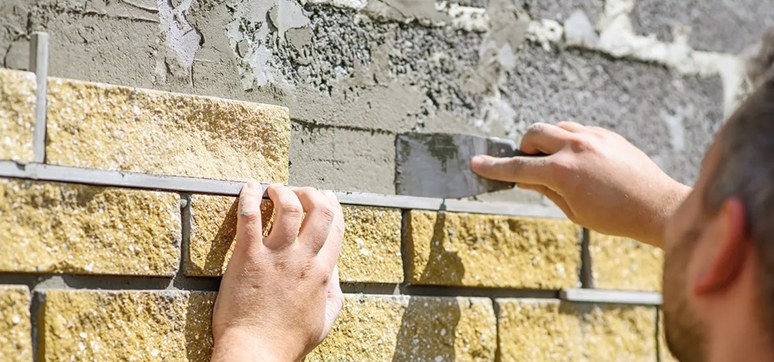
-
Dry installation method
This is the best and safest way compared to Wet cladding installation for thick stone cladding as each piece is secured with embedded metal anchors, and it will stay in the exact place for many years. This method is expensive and requires high-skilled labour.
-
Wet installation method
The Wet installation method is the most commonly used method for stone cladding. This technique does not require any on-site drilling, and, as a result, prevents cracks from appearing on the walls. It is also a much cheaper method than Dry Stone cladding. The only limitation of this method is that it doesn’t leave room for later expansion of the stone, which results in buckling of the stone.
Writer Credit: Ar. Jahnavi Malhotra
